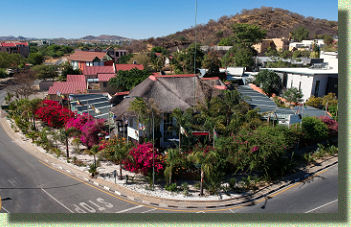Welcome to New Nouveau Tours
Spectacular scenery and adventure awaits you with Africa's huge selection of wildlife, sights and sounds that will leave you captivated. You'll be amazed at the warm Namibian welcome you will receive from both man and nature. The beauty of her endless horizons is immediately apparent as you travel from north to south, coast to center.
You'll receive a warm and welcoming reception with all our friendly accommodation partners and not forgetting our eager New Nouveau Tours team that will be at your back and call to support you in your own journey of discovery.
If relaxing by the poolside is what you are after, we have several accommodation partners that offer world class service, where you can do just that. Safaris, birdwatching and stepping as close to the abundance of wildlife is what you can look forward to on your tour with us.
With the aim to market tourism within Namibia that will exceed our visitors' experience expectations. On the New Nouveau Tours, guests can appreciate the vast beauty and versatility that the Namibian landscape, fauna and flora have to offer. Namibia has the power to change a man and once touched by her, it's in your blood for life.
On tour with us guests can appreciate the vast beauty and versatility of the Namibian landscape, fauna and flora. A chance to experience the night skies, guided safaris that will take you to the coast where sand and sea lie side by side, all the way to the Etosha National park, to experience wildlife and scenery in all its splendor and abundance. Moving further down south to experience the magic of the un-spoilt sharp edged red dunes at Sossus, and back to the Capital city to round up your travels. Just in time to help yourself to the array of curios and artefacts available at the Windhoek Craft markets.
|
|
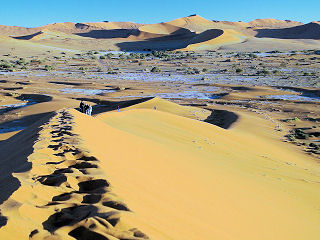
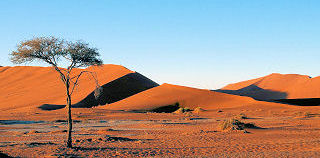
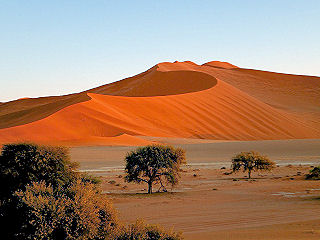
|
|
Sossusvlei
There are a number of attractions that can enjoyed when visiting the largest conservation
area in Africa. The Namib Naukluft is a perfect specimen of Namibias unspoilt desert
beauty, and covers almost 50,000 km² and houses Sossusvlei.
Renowned for its majestic star shaped, dunes contrasting against the stark white floors
of the pans are a mere 15km along the paved road from Dune 45.
A large ephemeral pan, set amid red sand dunes that tower up to 325m above the valley
floor. It rarely contains any water, except for when the Tsauchab river has gathered
enough volume and momentum to push beyond the thirsty plains to the sand sea.
Sossusvlei refers specifically to the salt and clay pan at the end of the Tsauchab
river's course, however, often the entire area including Dune 45, Deadvlei and Hiddenvlei
is referred to as Sossusvlei.
In a number of areas surrounding Sossuvlei look out for the petrified dunes. These are
ancient dunes that are approximately 1 billion years old and have solidified into rock.
There is a general parking area for those wanting to visit Hiddenvlei, Big Daddy,
Sossusvlei and Deadvlei. Visitors must travel a further 5km along a sandy 4x4 truck
in order to reach Sossusvlei.
Other attractions in close proximity to Sossusvlei include Sesriem Canyon, Dune 45,
Hiddenvlei, Big Daddy and Deadvlei. All of these attractions can be accessed from
the road that takes you to Sossusvlei, and are all well worth a visit.
|
|
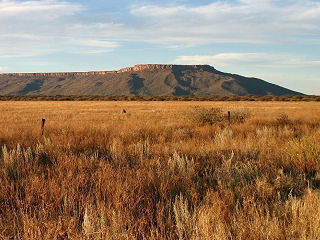
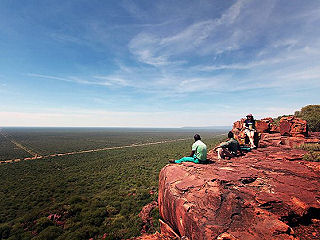
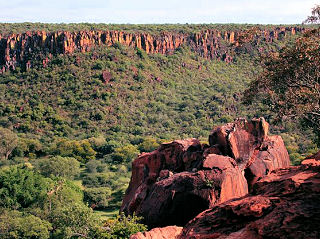
|
|
Waterberg National Park
Elevated high above the plains of the Kalahari in the east of Namibia, positioned some
230km north of Windhoek City and situated some 68km south east of Otjiwarongo, on the
Waterberg Plateau. One can find the Waterberg National Park, named after the prominent
table mountain that rises from the plateau.
Geologically, the oldest rock stratum is over 850 Million years old and dinosaurs' tracks
were left there some 200 Million years ago. The first human inhabitants were the San
people, who left rock engravings believed to be several thousand years old. A small
tribe of the San were still living their traditional lifestyle on the plateau in the
later 1960.
The plateau and some 405 km² of surrounding land were declared a Nature Reserve in
1972. The plateau was largely inaccessible so in the early 1970s several of Namibia's
endangered species were translocated there to protect them from predators and poaching
to extinction.
The Waterberg National park has over 200 different species of bird, with some rare
species of small antelope on the lower hills of the mountain. In 1989, Black Rhino
were reintroduced to the area from Damaraland, sparking a successful breeding program
of national and international significance for the species.
The site is also home to one of the major turning points in Namibia's History. It was
at Waterberg, in the foothills, that the Herero people lost their last and greatest
battle against German colonial forces at the beginning of the 20th century. Nearly
two thirds of the Herero population lost their lives during this period.
The graves of German soldiers who lost their lives at Waterberg can still be viewed
near the Waterberg Rest Camp at the base of the park.
|
|
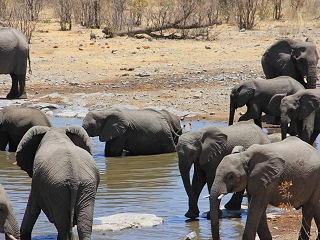
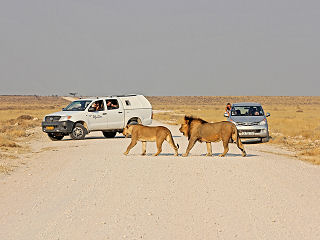
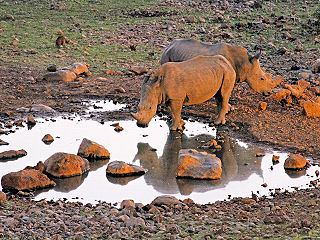
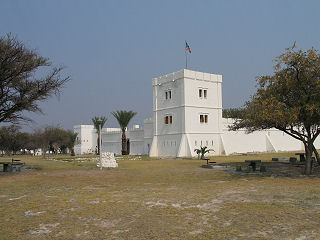
|
|
Etosha National Park
At first glance, it seems Etosha National Park is nothing more than a dry and desolate
expanse of land. The name literally translates to ’place of dry water’ - which
in itself doesn't seem all too appealing . Celebrated to be one of the most accessible game
reserves in Southern Africa. Etosha National Park is a protected area in northern Namibia
and reality is a rich mix of wildlife and history, and a great destination for anyone who's
interested in discovering what Namibia and its wilderness is all about.
Offering visitors a complete contrast of wide open spaces, a massive pan (that can be seen
all the way from space); covering 4731 km2. Large Camelthorn trees, mixed with Mopani trees,
makes this diverse vegetation account for the abundance of wildlife that thrives in the park.
The three main camps Okaukuejo, Halali and Namutoni, including the more exclusive Dolomite
and Onkoshi camps, provide the ideal safari experience for discerning travelers. Guests
can choose to go on a morning drive, afternoon drive or a full day guided excursion into
Etosha National Park from Mokuti Etosha Lodge.
Showcasing some of the most common and rarest wildlife species, including more than 340
bird species have been counted in Etosha. The park offers just over 100 species of
wildlife especially during the rainy season, bird watchers and nature lovers can marvel
at the color and plethora of wildlife species found in Etosha.
The Big 4, (with the exception of the Buffalo) tends to be the main attraction that draws
visitors to Etosha. What makes Etosha stand out from other parks is the fact that you are
able to get really close to the animals, which makes for great photo opportunities!
Expect to see the endemic black-faced impala, cheetah, hyena, silver-backed jackal, lion,
leopard, gemsbok, kudu, giraffe and a bunch of elephant.
Etosha Pan
An endless pan of silvery-white sand, upon which dust devils play and mirages blur the
horizon. One of Africa's biggest game reserves. Known by the local Oshiwambo people, as
the (Great White Place), which means Etosha. It is believed that this natural pan was
first formed over 100 Million years ago. The only mass breeding ground for flamingos in
Namibia.
The Etosha Pan sits comfortably at 130 kms long and 50kms wide in places, it is the largest
salt pan in Africa, which compliments the fauna and flora, and is the park's most distinctive
feature, so vast that it is visible from space.
|
|
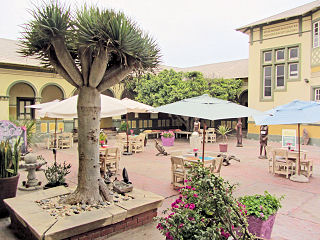
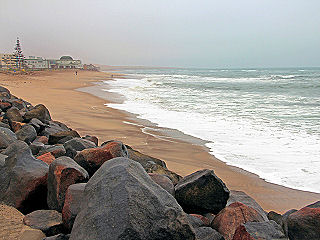
|
|
Swakopmund
From Windhoek, the Khomas Hochland mountain range stretches west to form a scenic
transition zone between the high central plateau and the Namib planes. Enroute to
Swakopmund and Walvis Bay, the scenic landform facilitates for some pleasurable driving,
though the real highlight awaits you at the coast.
A city that sits at the coast of Western Namibia, is the capital of the Erongo region.
A beach resort that is the 4th largest population center in the entire country.
One thing Swakopmund isn't, is boring. It is Namibias most popular holiday destination,
and there are a myriad of attractions for enjoying the great climate, including;
surfing, fishing, strolling around town or the beach. Not forgetting the many thrills
up for offer as it is the adventure sports capital of Namibia.
Swakopmund Jetty, Swakopmund Museum, National Marine Aquarium of Namibia, skydiving,
quad biking and camel tours, sandboarding and finally boat and balloon tours, among
others are some of the activities that you can look forward to at this coastal oasis.
With its seaside promenades and colonial era buildings, it seems that only the
wind-blown sand and the palm trees, sandwiched between the Namib Desert and
Atlantic rollers, makes this a surreal colonial remnant.
|
|
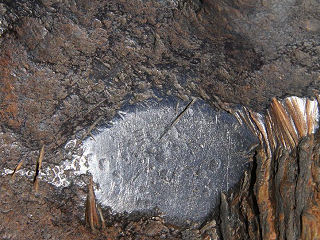
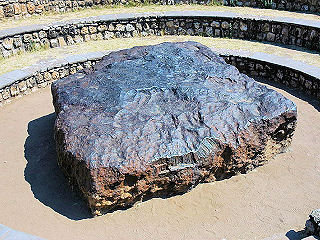
|
|
Hoba Meteorite
Situated on the edge of the Kalahari plain in northern Namibia is Farm Hoba West No.
322 in the district of Grootfontein, one of Namibia's most prized natural attractions,
that can only be seen here. Believed to have fallen to earth some 80 000 years ago,
and estimated at being between 200 Million and 400 Million years old. The meteor is the
largest single piece meteorite made up of Iron on the Earth surface and known as the
meteorite without a crater.
Discovered accidentally by Jacobus Hermanus Brits in 1920, while ploughing with his ox.
It was not until 1985 that Rössing Uranium Ltd enabled the site easily accessible for
tourists viewing. The Hoba Meteorite was proclaimed a national monument on in May of 1979.
This could be your only opportunity to get up close with an extra terrestrial body that
you can actually touch. The meteor is quite unusual in its shape being somewhat cuboid.
During the final stage of its journey while burning through the Earth's atmosphere the
Hoba Meterite's surface was thermally altered causing the surface indentations.
|
|
|


